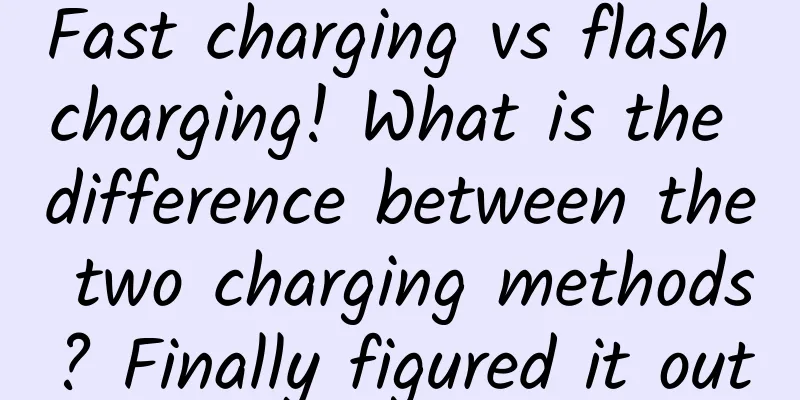How to find the sun's "brothers and sisters"? These three conditions are indispensable!

|
Today is the Lesser Heat. Although it is not the hottest time of the year, the "power" of the sun has gradually been fully demonstrated. The scorching sun reminds us of the myth of "Hou Yi Shooting the Suns". In ancient times, there were ten suns, all sons of the Emperor of Heaven. When they appeared at the same time, the high temperature was raging, and the crops and plants were all scorched, and the people were in dire straits. Yao sent Hou Yi, a sharpshooter, to shoot down nine suns and save the people. Although this is just a legend, have you ever thought about the question, does the sun really have brothers and sisters? The answer is yes, and there are many of them, but the sun separated from its brothers and sisters a long time ago and wandered alone in the Milky Way. Figure 1. Artistic image of the solar system (Image courtesy of ESA–Silicon Worlds) 01The Birth of the Sun 4.6 billion years ago, the solar system was born in a nebula that stretched for several light years. It was filled with gas and dust. All the material elements that make up us also came from here, including the carbon in our bodies and the oxygen we breathe. As American astronomer Carl Sagan said: We are all made of stardust. An accidental external force or disturbance triggered the gravitational instability of this nebula. Many clumps began to collapse, and the core slowly accreted the surrounding gas and gradually grew. After tens of millions of years, hydrogen fusion finally occurred in the core area, and stars were born. Among them, the ordinary yet extraordinary star is our sun. In this nebula, there may be thousands of stars born, all of which are brothers and sisters of the sun. The newly born massive stars emit blazing light and stellar winds, gradually blowing away the remaining gas and dust, leaving behind a star cluster. After the birth of the sun and its siblings, due to the gravitational pull of other stars and the rotation of the Milky Way, after millions of years, the star cluster became a loose group. After billions of years, they each ran in different directions, gradually moving away, scattered all over the Milky Way, and looking at each other from afar. Therefore, the location of our current Milky Way is not the place where the sun was born, and the nearest stars around us are not the brothers and sisters of the sun. So where is the sun's hometown? How are its brothers and sisters now? After billions of years, can we find them among the hundreds of billions of stars in the Milky Way? Figure 2: A corner of the Ophiuchus Nebula photographed by the James Webb Telescope. The bright spots in the nebula are newly born stars. (Image courtesy of NASA, ESA, CSA, STScI, Klaus Pontoppidan (STScI), Alyssa Pagan (STScI), see "Go to the universe hundreds of light years away to "see an exhibition"? This astronomical telescope paints a picture of the "cradle" of stars!" 02 The "DNA" of stars - element ratios There are thousands of stars in the Milky Way. How do we know which ones are the brothers and sisters of the Sun? For us humans, the most reliable way to verify kinship is "DNA" testing. Stars born from the same nebula have similar ages and the same ratio of chemical elements. Astronomers measure the element ratios of stars and attach a chemical label to each star. This label is the star's "DNA" (same as above), which can determine the kinship between different stars. Astronomers used this method to find many stars with element ratios very close to that of the sun. In the star cluster M67, most stars have similar element ratios to the sun, and the age of this star cluster is between 3.5 and 4.8 billion years, which is close to the age of the sun. Many astronomers speculated that the sun originated from the M67 star cluster and broke away from this star cluster in the early years. Relying solely on chemical labels still has a high probability of misjudgment. This is because the accuracy of uniformly measuring the element ratios of a large number of stars is not high enough. In addition, this method relies on two assumptions: first, the distribution of elements in the nebula is uniform; second, the element ratio of each nebula is unique. However, these two assumptions are not strictly true. Figure 3, M67 star cluster. (Image from https://apod.nasa.gov/apod/ap070809.html, Credit & Copyright: Processing - Noel Carboni, Imaging - Greg Parker) 03 How to find the sun’s brothers and sisters? Do we have any other methods to help identify whether the members of the M67 cluster are brothers and sisters of the sun? All the stars in the Milky Way are revolving around the center of the Milky Way, just like the eight planets revolve around the sun. The sun is now moving around the center of the Milky Way at a speed of about 230 kilometers per second. It is estimated that it takes 230 million years to orbit once. It has orbited more than 20 times since its birth, depending on the location of the sun's birth and the path of its migration. We know the speed and direction of the sun's movement relative to the center of the Milky Way, and considering the gravitational potential of the Milky Way, we can simulate the trajectory of the sun's movement over the past 20 orbits. Of course, we also need to consider the impact of other celestial bodies on the sun's trajectory, and there is still some uncertainty in this simulation result. If the Sun "ran away from home" from the M67 cluster, then their trajectories must have intersected at a certain point in the past few billion years, which is the time and place when the Sun left M67. Before that, the trajectories of the Sun and M67 should be consistent. The latest simulation results show that under certain specific conditions, such as after M67 collides with one or more nebulae, the Sun can escape from the cluster and reach its current orbit, but this collision event is likely to cause the disintegration of the M67 cluster. So whether M67 is the parent cluster of the Sun or not, astronomers need to do more research. In short, to determine whether a star is a sibling of the sun, the following three conditions must be met at the same time: first, its age is similar to that of the sun; second, the proportion of chemical elements is consistent with that of the sun; and third, its movement trajectory has intersected with that of the sun somewhere in the past few billion years. 04 Brothers and sisters found Combining the age, chemical signature and kinematic characteristics of stars, astronomers have indeed found some isolated stars that are likely to be brothers and sisters of the sun. The first star, numbered HD 162826 , was discovered in 2014. It is 110 light-years away from us. It is slightly larger than the sun and has a diameter of 1.3 times that of the sun. This star meets all three of the above conditions. The second one was discovered in 2018, numbered HD 186302 , 185 light-years away from us, but subsequent more detailed motion trajectory simulations found that it did not meet the third condition. In 2020, another one was discovered, numbered 2M19354742+4803549 , about 1,100 light-years away from us, slightly smaller than the sun, with a diameter 0.8 times that of the sun. However, in 2022, through more detailed spectral observation data, it was found that this star is very young, about 36 million years old, so it cannot be a sibling of the sun. There are hundreds of other candidates that may also be brothers and sisters of the Sun, but the current results are still very uncertain and can neither be confirmed nor completely ruled out. The above three stars were selected from the observational data of hundreds of thousands of stars, and subsequent research has ruled out two more. It can be seen that among the hundreds of billions of stars in the Milky Way, it is very difficult to find brothers and sisters of the Sun, like finding a needle in a haystack. Figure 4. The location of HD 162826 (marked by a red circle). (Image source: Tomruen/Creative Commons) Where do we come from? For the Sun, this question has not yet been answered. Although the Sun is the star we are most familiar with and the star we have studied the most, there are still many unsolved mysteries about the origin of the Sun and the entire solar system. Finding the Sun's brothers and sisters will help solve these mysteries, such as where did the Sun come from? How did it get to its current position? What was the surrounding environment like in the early days of the solar system? What impact did it have on the formation of planets in the solar system? What impact does it have on the environment required for the emergence of life? It is impossible for the Sun and its brothers and sisters to be reunited again, but hopefully one day we can find them and take a family photo of them. References: 1. Elemental Abundances of Solar Sibling Candidates - NASA/ADS (harvard.edu) 2. The AMBRE project: searching for the closest solar siblings - NASA/ADS (harvard.edu) 3. Searching for solar siblings in APOGEE and Gaia DR2 with N-body simulations - NASA/ADS (harvard.edu) 4. 2205.01112.pdf (arxiv.org) Author: Yan Zhen, researcher at Shanghai Astronomical Observatory, Chinese Academy of Sciences Produced by: Science Popularization China Produced by: China Science and Technology Press Co., Ltd., China Science and Technology Publishing House (Beijing) Digital Media Co., Ltd. |
<<: It’s so hot! We have air conditioning, but what about the animals?
Recommend
Event promotion and operation: 8 hot creative forms of H5!
It cannot be denied that, on the basis of guarant...
Event Operations: What should you do when you encounter users trying to take advantage of you?
What should you do if you encounter freeloaders d...
Android Aiyouman v2.1.3 All comics free to read_Taoduoduo
Android Aiyouman v2.1.3 All comics free to read_T...
iOS14: The spring of the beggar version of iPhone is here!
Due to the disappointment caused by iOS13 to Appl...
Anniversary event planning: 5 steps from planning to implementation!
The growth of a person needs the blessing of birt...
Regarding information flow advertising, everything you should know is highlighted for you!
Today, I will explain to you in a simple and in-d...
If you drool while sleeping, beware of these 4 diseases! Don't ignore them!
Many people will find their pillows wet with sali...
In-depth analysis: The top 500 mobile apps list in May 2016!
Last Monday, we released the TOP500 mobile APP ra...
Nintendo's new Switch, the OLED screen is still 720P, users suspect it comes from Audi's inventory
Nintendo Switch has been on the market for more t...
Exploring the mysteries of the Earth's "heart"
The Earth's dense iron core may rotate more s...
How much reference value does Durex’s copywriting have for you?
A friend came to complain, saying that his boss a...
APP promotion tips: 100,000 yuan brings 20 million users
Last time, I wrote an article titled "How to...
iOS channel first release rules and contact list
91 Assistant 1. First Release Form During the ini...
"Ugly tired" is all over the screen! I never thought that ugliness can also be considered a "work injury"
Reviewer of this article: Zhou Xiaobo, Doctor of ...
How much does it cost to make a geotechnical building materials mini program in Karamay?
More and more businesses are paying attention to ...









